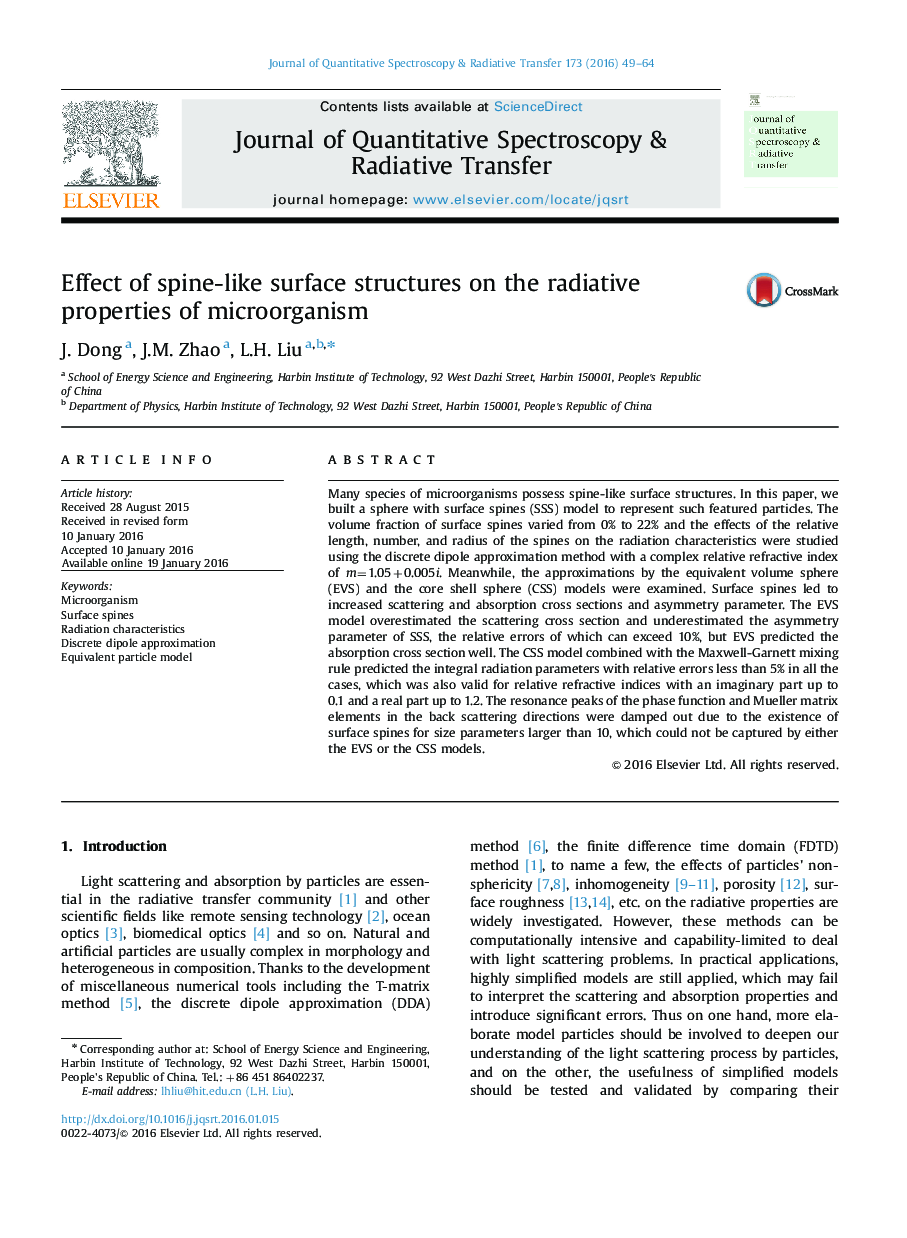| Article ID | Journal | Published Year | Pages | File Type |
|---|---|---|---|---|
| 5427733 | Journal of Quantitative Spectroscopy and Radiative Transfer | 2016 | 16 Pages |
â¢Models were built to represent microorganisms with spine-like surface structure.â¢The radiative properties were calculated by the DDA method.â¢Approximations by two simplified equivalent models were investigated.â¢The core shell sphere predicts well for the integral radiative parameters.
Many species of microorganisms possess spine-like surface structures. In this paper, we built a sphere with surface spines (SSS) model to represent such featured particles. The volume fraction of surface spines varied from 0% to 22% and the effects of the relative length, number, and radius of the spines on the radiation characteristics were studied using the discrete dipole approximation method with a complex relative refractive index of m=1.05+0.005i. Meanwhile, the approximations by the equivalent volume sphere (EVS) and the core shell sphere (CSS) models were examined. Surface spines led to increased scattering and absorption cross sections and asymmetry parameter. The EVS model overestimated the scattering cross section and underestimated the asymmetry parameter of SSS, the relative errors of which can exceed 10%, but EVS predicted the absorption cross section well. The CSS model combined with the Maxwell-Garnett mixing rule predicted the integral radiation parameters with relative errors less than 5% in all the cases, which was also valid for relative refractive indices with an imaginary part up to 0.1 and a real part up to 1.2. The resonance peaks of the phase function and Mueller matrix elements in the back scattering directions were damped out due to the existence of surface spines for size parameters larger than 10, which could not be captured by either the EVS or the CSS models.
